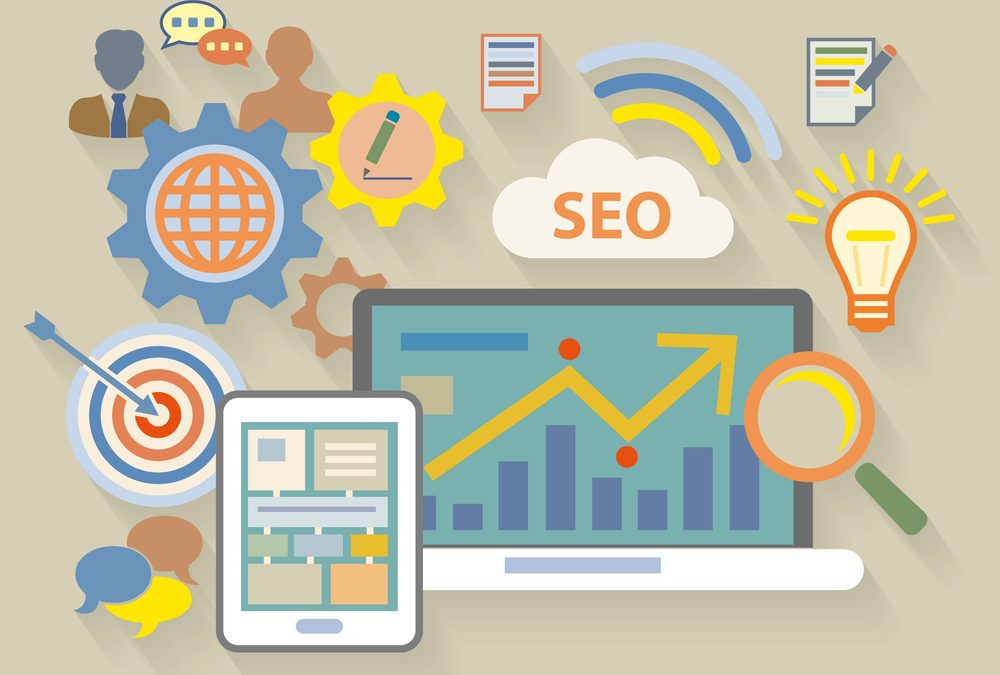The Power of Web Analytics, Part II
This is a followup to the post we wrote a few years ago about the power of web analytics. In that post we provided some reasoning about why web analytics is important and how no online business should operate without it.
Now I want to discuss some of the basic components that I believe are critical to a proper web analytics program. Or at least simplify it somewhat. This assumes you cannot afford to hire an outside company to provide you with a complete internet marketing program which would (should) include web analytics. (although it is only fair to mention here that if you are not using our web analytics service you might be missing out on one of the most affordable internet marketing programs on the planet.) And this also assumes you have no idea about how to get started, what you should do and how you should do it.
So basically there are three components to web analytics you should be concerned with. The first is data collection. The second is data analytics. The third is conversion tracking.
In addition to the three primary components attached to web analytics there is also the process of taking action on the information you obtain.
Without the proper collection of the data you have nothing to measure against. Sure you can look at your server logs and see how much incoming traffic you have or a log reader such as the type available in most web hosting control panels. But there is much more to the data that can be gleaned if you have proper analytics in place. With proper analytics you can see where your visitors come from, how long they stay on a web page, the path they take through your website, what referred them to your website such as another website or a search engine, what type of browser they are using, their screen resolution and much more.
And you should know easily how many sales or conversions you have in a month. You could do some simple math and see what your conversion rate is thereof via server logs. That would be a start but it really doesn’t give you any defined data that is very actionable. Actionable data would be things like knowing how the visitor came to your site, the path they take through the website before converting to a sale, which pages convert best or do not convert at all, etc.
So where do you start? In my opinion the best place to start is in Google Analytics (GA). GA provides very complete and comprehensive tracking and analytics data once it is installed and activated on your site. And it is free to use. So it doesn’t get much better than that. So if you haven’t already you should sign up for it and activate it on your website so you can start collecting data.
We won’t get into all of the technical aspects of installing it or using it for the purposes of this post we simply want to steer you in the right direction. It is really easy to integrate into your website. And if you need some help you can always contact us we can get you up and running quickly for a small fee and even give you some overview on how to use the program.
Once you’ve installed it and are collecting data and you login to your GA account, under the reporting tab and then the audience/overview section is where you will find quite a bit of information important to you learning how to grow your business. Here you will find how many unique visits you get in a month or time period you choose. How many pageviews, the number of pages a average visitor visits in a session, the average visit duration and the overall site bounce rate. I mention these in particular because I believe they are some of the most critical data points to your web analytics because they address the most important aspects of developing conversions which is visitor engagement.
Without visitor engagement likely you are missing out on making sales or converting your visitor to the desired response. Converting a visitor is about having the proper funnel. Consider that your landing page is the entry point to your funnel and the conversion or sale is the desired exit point of the funnel.
Analyzing the data related to the visitors that land on your entry point or landing page is the first critical step. The more engaging your landing page is and the more compelling it is towards leading the visitor through the funnel the better your chances of success. As you begin to understand your visitor traffic and how it relates to your offering and the desired results of your website presence you are able to make educated decisions abut the evolution of your website. I like to say a website is like a river. If it is in constant motion it remains fresh and vibrant and if it just sits there and never changes then it begins to stagnate and die. Implementing a proper and ongoing web analytics program will insure your website is always in constant motion, continuously improving itself and subsequently increasing your return on investment.
And this is where split testing is likely going to occur. With split testing you test different variations of a landing page in order to achieve the highest possible rate of return for that page. Again, GA makes it easy to conduct split testing and will track the results for you. Regardless of the hundreds if not thousands of theories on what makes the best landing page there really is no simple answer or solution. First you collect the data with an analytics program like GA then you have insight into what might need to be changed or made better.
The first rule I believe is simply to have a plan. For that you need to ask yourself some questions. What is it you want to accomplish, what is your goal on your website? What is the best way to communicate what it is you want to say, or, what is it you need to say? How do you communicate this and be engaging to the visitor? If you were the visitor how would you expect to be communicated to and what is it you would want or expect to see? What would compel you to purchase your product or service or respond/engage on your website?
Once you have a plan and execute it then you refine and develop according to the analytics data. Once thing I’ve learned over the years is we don’t usually have the complete answer or solution and neither do our clients. Usually our clients have a vision about how they think the website should look, what it should say. And we are very good at executing the vision. But it is the web analytics that teaches us what the visitor really wants and what will make them respond to the offer. Then it simply becomes a process of site development by split testing the page or pages on an incremental basis base don the knowledge gained from the analytics.
Remember earlier we mentioned the number of pages a average visitor visits in a session, the average visit duration and the overall site bounce rate. This is where we want to start because these numbers represent visitor engagement. We want the visitor to visit more than one page because obviously they need to complete the funnel to the point hopefully, of conversion. So if the bounce rate is high which means they are only visiting the one page then “bouncing” (leaving the site) then we know they are not engaged. Either we are not getting the message across, its the wrong message or perhaps they simply don’t like us or our overall design or something. There is no magic number for the bounce rate because it is going to be different from one site to another. And of course, if your goal is one-page-centric (such as a call to action to call an 800 number) then a high bounce rate might be erroneous. Sometimes we can learn from other pages if we have site pages with a low bounce rate we might see something about it that helps us understand what makes it work better than other pages. To determine an acceptable bounce rate first we have to consider our content, what our expectation of our visitor is, and how relevant our traffic is to the offer. and just because our bounce rate is really low doesn’t always mean a good thing either if the visitor is not completing our conversion. We can have too much site content and not enough call to action for example so the visitor rolls around for along time but never does anything. But once we have an understanding of what is reasonable to expect as a bounce rate for our landing page then we have a base from which to know what direction we need to take to build visitor engagement and convert more traffic.
Coupled with the bounce rate is average visit duration. Again this is a subjective number proportional to our expectations on how our funnel is supposed to work. IN other words, maybe all we want is for them to give us an email address and subscribe to a newsletter. In such a case average visitor duration might be exceptionally low and that is fine if we are converting visitors. Or, maybe we are an ecommerce site with a lot of products in such a case we might want the visit duration to be much longer to show that the visitor is spending time on our site, shopping products. Once we know what the average visit duration is for visitors that convert we can use that as a benchmark against our sitewide average visit duration and work backwards from there to find ways to improve this by engaging the non converting traffic longer. And, by split testing our landing page design if we do the right things enough times we will begin to see the right results.
This post is just a small part of the power of web analytics and why it is important if you are going to grow your business. In reality, it is a complex and involved process that takes time and experience, but my point with this post is to reiterate that if you are not conducting web analytics on your website you are missing a vital ingredient in building a successful online business. If you do not have the time or willingness to tackle this yourself then invest in hiring a professional company that can assist you. It will be oney well spent.



